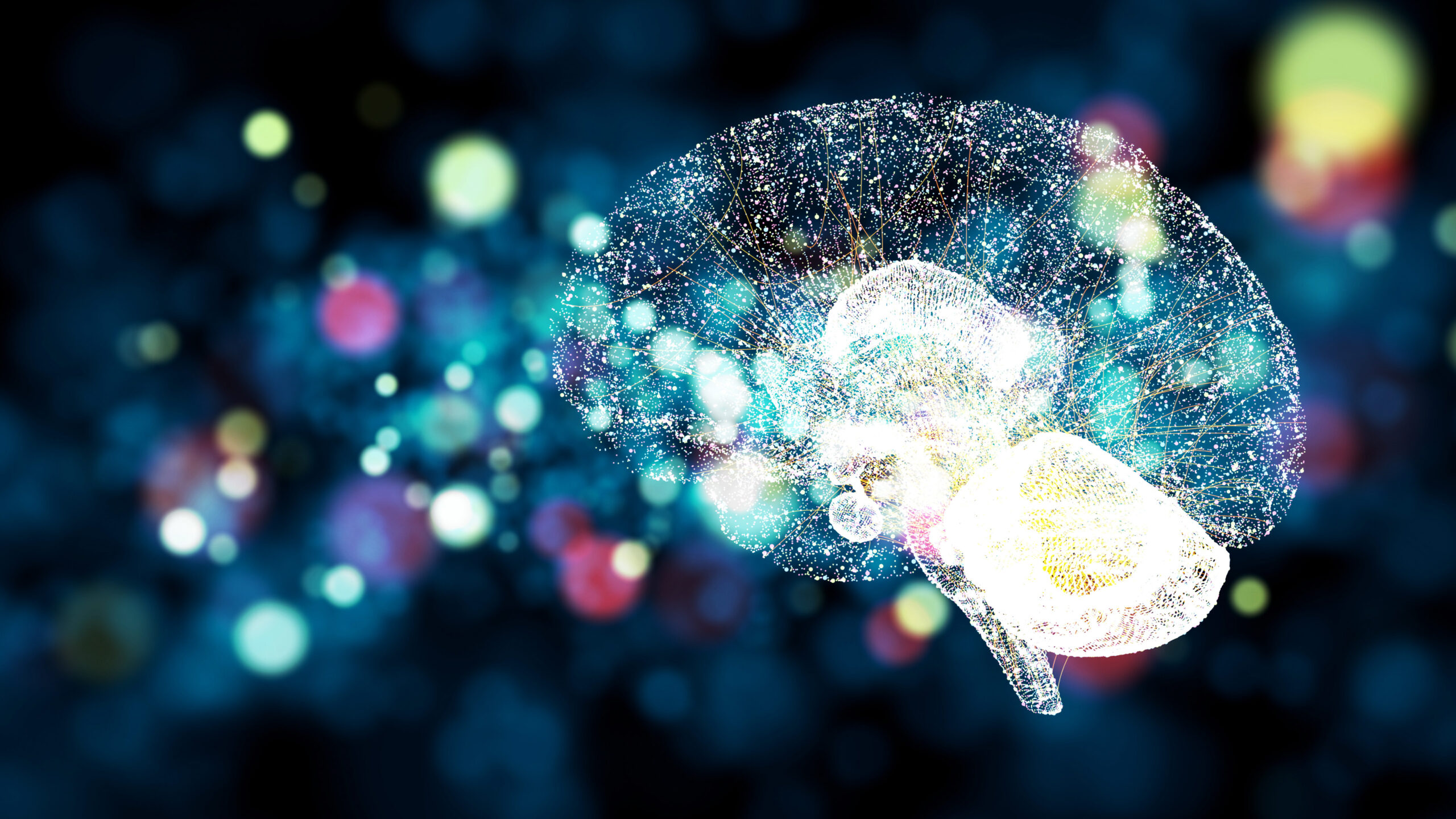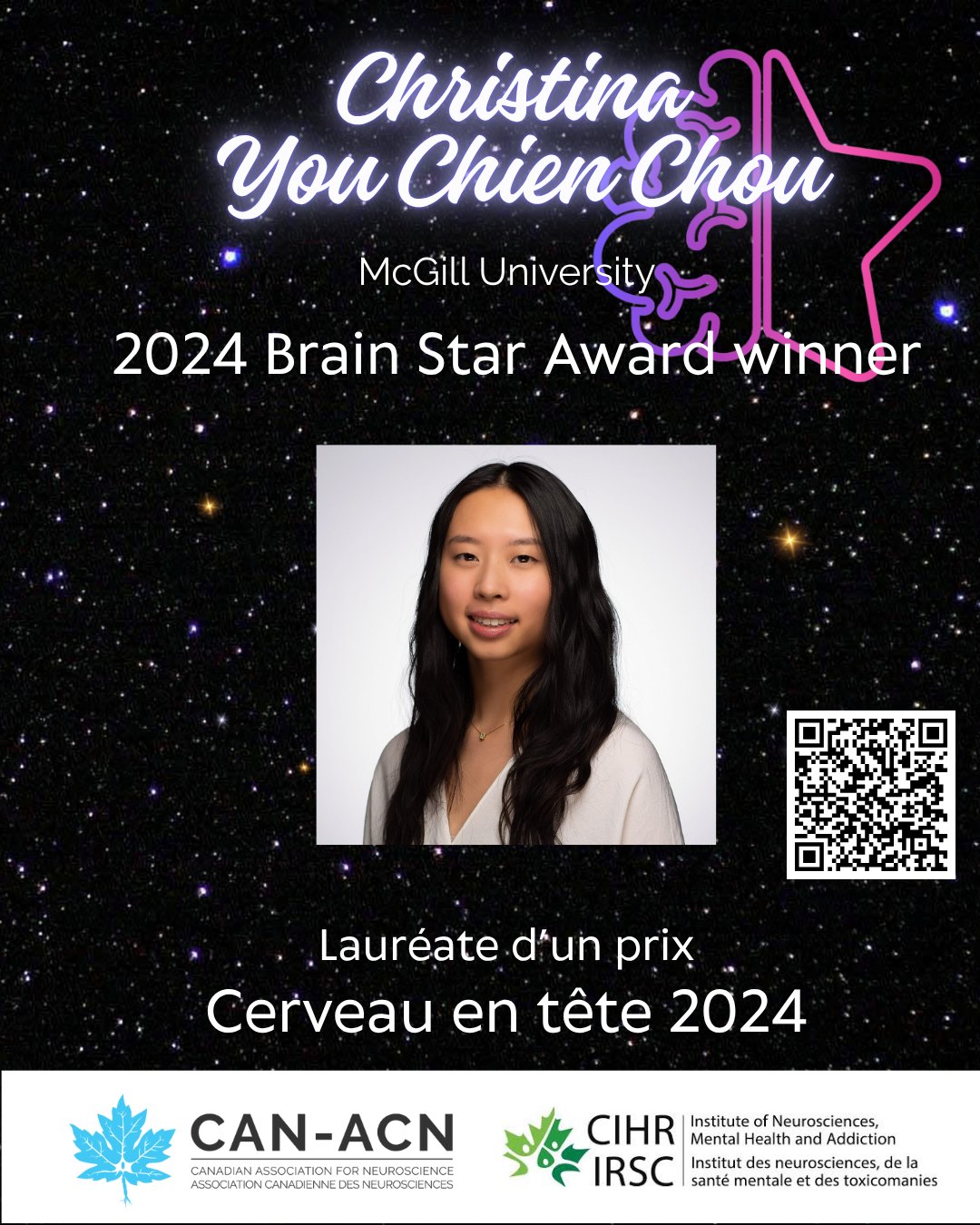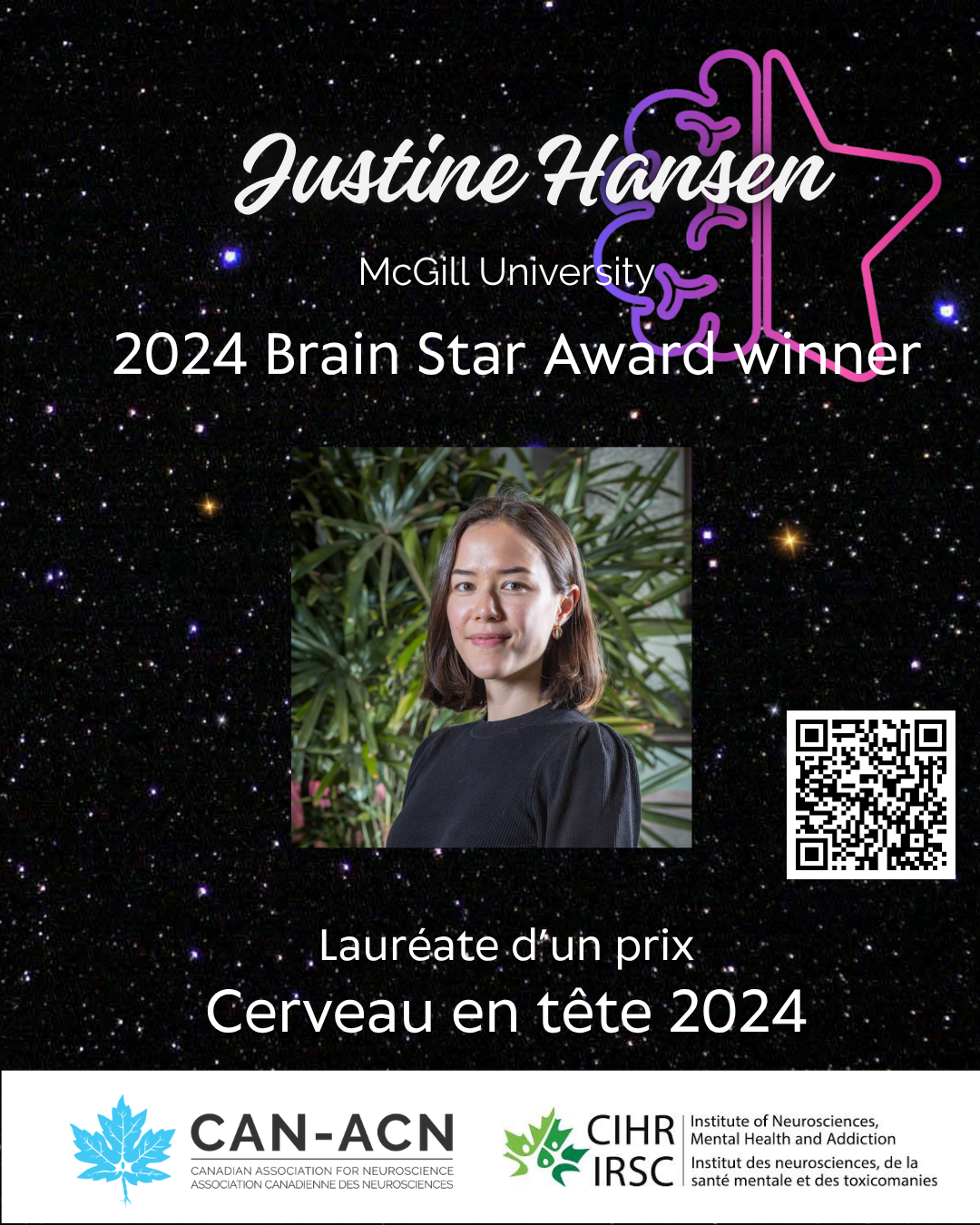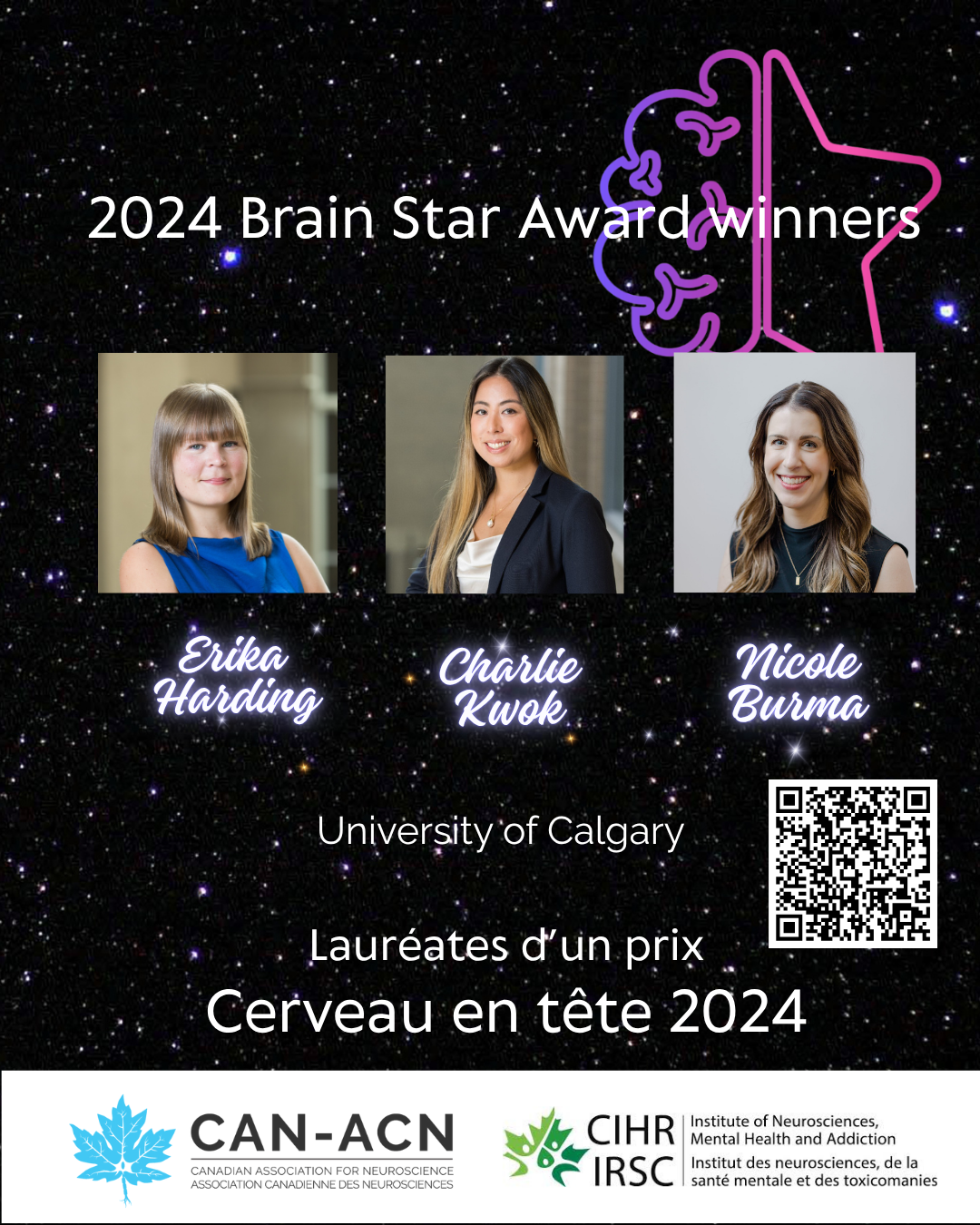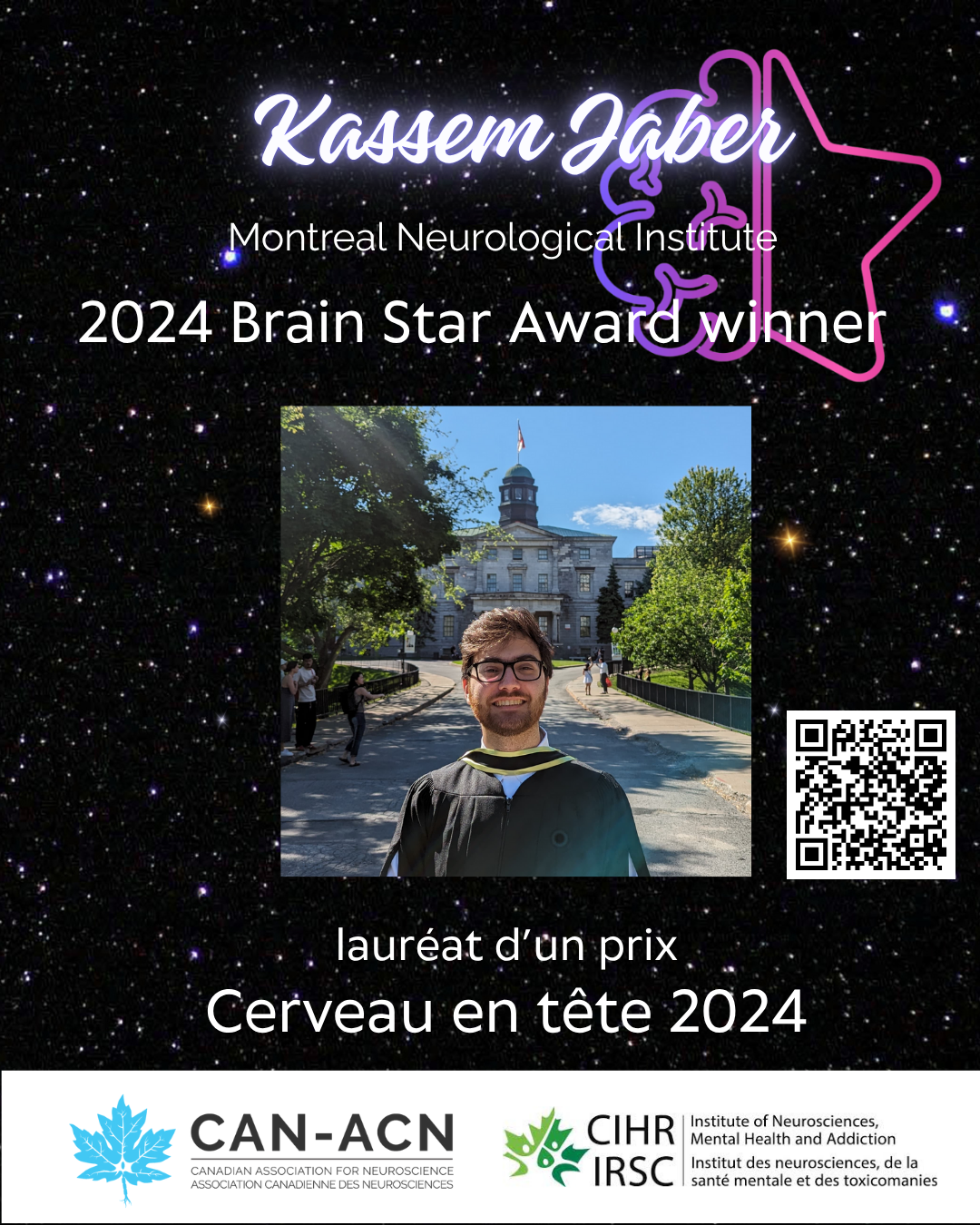Author: Julie
-
Read our latest newsletter: CAN Connection – Fall 2025
We invite you to read our latest newsletter: CAN Connection – Fall 2025
-
Assistant Professor (Tenure-Track), Department of Neuroscience, University of Lethbridge
The Department of Neuroscience (https://www.ulethbridge.ca/artsci/neuroscience) at the University of Lethbridge invites applications for a tenure-track position at the rank of Assistant Professor. We are seeking a neuroscientist with demonstrated excellence in research on brain function across the life span in nonhuman animals, employing a systems-level approach and utilizing state-of-the-art methods. Researchers with experience in modern…
-
Brain Star Award feature: Sergio Crespo-Garcia, Maisonneuve-Rosemont Hospital Research Center
As the last Brain Star Award Feature of this series, we are proud to present the first place winner of the 2024 competition, Dr. Sergio Crespo-Garcia. He is also the winner of the Marlene-Reimer Award for 2024. Congratulations! Discovery of a new therapeutic avenue to protect vision in diabetic patients. Diabetes is a silent epidemic…
-
Brain Star Award Feature: Christina You Chien Chou – McGill University
An optomapping approach to better understand connections in the visual cortex of the brain In the brain, information is passed from neuron to neuron via connections called synapses. Synaptic dysfunction unsurprisingly underlies many neurological diseases, such as autism, schizophrenia, and epilepsy. Understanding how synapses are wired up in a cell-type-specific way is fundamental to understanding…
-
CAN submits a brief to the Department of Finance pre-budget consultations
We invite you to read our submission to the Department of Finance pre-budget consultations
-
Brain Star Award Feature: Justine Hansen, McGill University
Studying how the deepest regions of the brain contribute to brain activity The brainstem is a structure which is crucial for survival and consciousness, yet it is typically excluded from live human brain mapping efforts due to the difficulties in recording and analysing activity in this small region which sits deep at the base of…
-
Brain Star Award feature: Erika Harding, Nicole Burma, Charlie Hong Ting Kwok, University of Calgary
Identification of the Pannexin-1 channel in the brain as a target to treat opioid withdrawal symptoms Opioids remain one of the most effective analgesics, with 10-15% of Canadians receiving opioid prescriptions per year. However, opioids are also highly associated with substance use disorders and overdose related deaths. Last year alone, over 7000 Canadians passed away…
-
Brain Star Award Feature: Kassem Jaber, Montreal Neurological Institute
A new framework to assess placement of electrodes in the brain for epilepsy surgery Epilepsy is a chronic condition that is characterized by spontaneous recurring seizures. In clinical practice, the region which generates seizures is called the epileptic focus. The location of the focus can be localized by electrical measurement of brain activity, known as…
-
Brain Star Award Feature: Ghazaleh Eskandari-Sedighi, University of Alberta
Identification of CD33m as a new protective factor in Alzheimer’s Disease development. Immune cells in the brain, called microglia, are thought to be critical in Alzheimer’s disease (AD) development through numerous functions, including their ability to remove amyloid beta (Aβ), which is protein that accumulates in the brains of AD patients. In this study, Ghazaleh…
-
Read CAN’s brief submitted to the 2025 FINA Pre-budget consultations
We are happy to share with you CAN’s pre-budget brief submission for the Consultations launched by the Finance committee of the House of Commons. https://can-acn.org/wp-content/uploads/2025/07/CAN-FINA-Submission-July-2025_final-1.pdf Our two main recommendations are an effective doubling of tri-agency budget over the coming years, and increased investment in brain-related programs. We believe if multiple organizations submit similar recommendations, including the…

